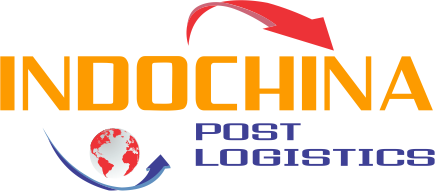According to Vietnam Report research results, there are more than 4,000 transport and logistics companies in Vietnam, providing diverse and comprehensive services ranging from transporting goods to paying taxes or making payments, of which 88 percent are domestic enterprises, 10% are joint-venture enterprises, and 2% are foreign enterprises, primarily concentrated in the two major cities of Hanoi and Ho Chi Minh City.
However, in comparison to FDI companies, the competitiveness of Vietnamese transportation and logistics enterprises remains poor. The number of FDI firms is lower, but they control 70-80 percent of the market. The primary services that Vietnamese logistics companies offer to their consumers are basic services or single services. Price competition is critical, with little additional value, with warehouse services, freight transport, freight forwarding, loading and unloading, sorting services, packing, and storage frequently acting as subcontractors or agents for foreign firms. Other services in the logistics service chain are mostly provided by FDI firms.
There are several causes for this, including both internal and external forces. They are inadequate infrastructure, a labor force lack skilled in transportation and logistics, insufficient institutions and regulations, complex administrative procedures, and expensive logistics expenses. However, the factor with the greatest impact on enterprise operation is the low quality of human resources and the ability of corporate governance, which leads to increases in service costs for Vietnamese transport and logistics enterprises, and the quality of some services and professionalism are not equal.
Large space for development
According to the World Bank’s (WB) 2018 announcement, Vietnam is ranked 39 out of 160 countries, a 25-rank improvement over 2016, with the LPI (logistics performance index), score improving significantly in all indicators, particularly the capacity, and service quality group, from 2.88 points to 3.4 points. This outcome is the result of efforts to streamline customs operations, use information technology, and upgrade infrastructural systems.
Furthermore, the government has implemented a number of measures to support the growth of transportation and logistics; several trade agreements have been negotiated; the e-commerce market and automation sector are expanding rapidly; and infrastructure is being upgraded. This is a critical component in the advancement of transportation and logistics.
Furthermore, the transport and logistics business has numerous prospects as a result of the US-China trade war, which caused many Chinese enterprises to relocate their manufacturing to Vietnam and Southeast Asia. In the Vietnam Report poll, over 91 percent of companies predicted that industry growth will increase by 10% in 2020, with several experts predicting a growth rate of 14-16%.
According to the Vietnam Report research, Vietnam’s transport and logistics industry, which has significant development potential, may fully participate in the world’s transportation transaction hubs. However, in order to participate, 72.73 percent of businesses stated that improving the quality of logistics services, enhancing the application of information technology in business activities, and developing competitive pricing policy should be prioritized because the current trend in developed countries is gradually implementing e-logistics, green logistics, e-documents, and cloud computing such as container loading or unloading, loading and unloading goods in warehouses and yards.
In addition, businesses need to improve reliability (63.63 percent), deadlines (45.45 percent), responsiveness (45.45 percent), customer policies (36.36 percent) and the quality of human resources (18.18 percent).
In addition, the trend of online shopping is bringing great opportunities for Vietnamese transport and logistics enterprises. The sharp increase in the number of e-commerce businesses – reaching $8 billion in 2018, an increase of 30 percent compared to 2017, and is expected to continue to grow in the coming years, reaching $10 billion by 2020.
Simultaneously, as online shopping demand grows, it creates a development opportunity for delivery service businesses with a high volume of delivery and service coverage across provinces, while also increasing the demand for space to store, categorize items, and fulfill orders. Many firms have seen the trend and established and invested in a system of warehouses and logistics centers with the role of providing transportation services, fulfilling orders, and distributing in a professional and high-quality way. By early 2019, six large logistics facilities had begun construction and were operational.
To summarize, as Vietnam’s economy integrates further into the global economy, the scope of the logistics service industry has increased, offering both many development possibilities and substantial obstacles for the development of Vietnamese logistics firms. Enterprises must-have solutions in place to update their modes of operation, improve service quality, human resources, and financial capacity, and better determine their path.

